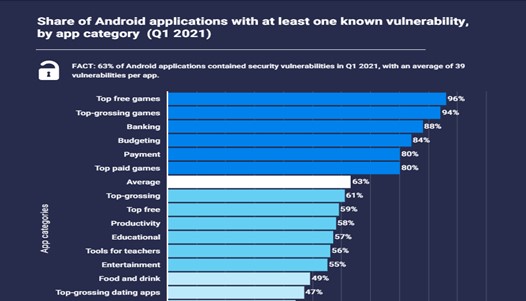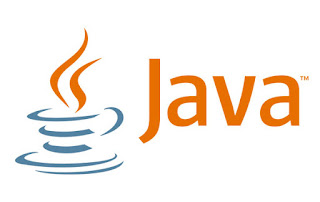How Java Frameworks are Changing the Face of Backend Development
Backend development is rapidly gaining importance in the ever-expanding digital landscape. It refers to the programming and coding behind the user interface in the software development industry.
This includes all features that are implemented on the server side, such as database interactions, business logic, and routing.
Java frameworks have revolutionized backend development, providing developers with powerful tools and libraries to streamline the creation of robust and efficient web applications. Java backend frameworks help define applications' structure on a high level.
Let's embark on this journey, exploring the world of popular Java frameworks that have gained prominence in the realm of backend development as well as the best practices for working with Java frameworks.
I. Understanding Backend Development
Backend development refers to the construction and maintenance of the server-side components of a web application or software system. It focuses on managing data, business logic, and integrations to ensure the proper functioning of the application.
The main purpose of backend development is to ensure the proper functioning and reliability of the application by handling the behind-the-scenes operations and facilitating communication between the frontend and backend systems.
Back-end development encompasses server infrastructure, programming languages, frameworks, databases, APIs, web servers, security measures, caching, performance optimization, and testing tools. It involves managing the back-end code, storing data, facilitating communication, handling requests and responses, ensuring data security, enhancing speed and scalability, and maintaining code quality and functionality.
A robust backend infrastructure allows web applications to handle large data volumes, deliver reliable results, and scale effectively to meet increasing user demands.
II. Evolution of Java Frameworks
In the early 2000s, Apache Struts introduced the MVC pattern, Redefining web application development. The mid-2000s saw the rise of Spring Framework, offering lightweight and modular solutions with features like IoC and AOP.
JavaServer Faces (JSF) gained popularity in the late 2000s for its component-based approach to web UI development. The 2010s brought major updates and rebranding, with Java EE transitioning to Jakarta EE.
Today, modern frameworks such as Spring Boot, JavaFX, and Micronaut continue to push the boundaries of Java development services, providing efficient and modular solutions for diverse application needs.
The impact of these frameworks on backend development efficiency has been significant. By automating many common tasks like database configuration and authentication management through modularization, they save time while reducing errors caused by manual coding processes.
III. Advantages of Java Frameworks
Java frameworks offer a range of advantages that make backend development faster, more efficient, and more secure.
Firstly, Java frameworks offer improved productivity through code reuse and abstraction. They provide ready-to-use components, libraries, and templates, allowing developers to focus on business logic rather than reinventing the wheel.
Secondly, it come with enhanced security features. They incorporate built-in security mechanisms, such as authentication, authorization, and data encryption, to protect against common security vulnerabilities.
Thirdly, Java frameworks simplify database integration and management. They provide tools and frameworks for database connectivity, object-relational mapping (ORM), and query execution, streamlining the interaction with databases.
In addition to this, Java frameworks offer scalability and performance advantages. They are designed to handle high-traffic loads and provide features like caching, asynchronous processing, and load balancing. Using Java frameworks ensures seamless scaling as demand increases while also delivering optimal performance.
IV. Popular Java Frameworks for Backend Development
In the world of dedicated web development teams, these Java frameworks are the most popular choices. Each framework has its own strengths and areas of focus, allowing a web application development company to choose the most suitable one based on project requirements and preferences.
A. Spring Framework
Spring is a widely popular open-source framework to develop enterprise-grade Java applications. Its core features include dependency injection, aspect-oriented programming, and inversion of control, making it one of the most customizable frameworks available.
Spring Boot is another tool that simplifies rapid application development by providing pre-configured setups for common tasks like database access or web services integration.
Integration with other Java frameworks and technologies is also a key advantage provided by Spring - allowing developers to take advantage of third-party libraries or tools while maintaining consistency across their projects.
B. JavaServer Faces (JSF)
JavaServer Faces (JSF) is an event-driven UI component model designed specifically for building user interfaces in web applications using the Java EE technology stack. It provides an efficient way of developing complex UI components by offering easy-to-use libraries and tools, significantly reducing coding time.
The JSF architecture allows developers to define the structure of their pages as well as how they respond to user events, reducing the complexity associated with traditional servlet-based approaches.
JSF provides a robust UI component library and supports features like form validation, data binding, and navigation management.
C. Play Framework
Play Framework focuses on reactive programming principles and asynchronous models, making it ideal for building scalable high-performance applications such as real-time systems where performance matters most, delivering low latency results even under heavy traffic loads.
Other features offered by Play include support for hot reloading during development cycles, automatic testing capabilities and more, all aimed at streamlining backend development processes further.
D. Apache Struts
Apache Struts is a popular Java framework that implements the Model-View-Controller (MVC) architectural pattern. It provides a structured approach to building web applications, separating concerns and promoting code reusability.
Struts offers features for request handling, data validation, and internationalization. It integrates with databases through Object-Relational Mapping (ORM) frameworks and supports various technologies such as JSP, AJAX, and XML.
V. Best Practices for Java Frameworks
Java frameworks are a powerful tool for backend development, but like any technology, they must be used correctly to ensure that projects run smoothly and efficiently.
Firstly, following coding standards and conventions specific to the framework being used is essential. This helps maintain code consistency across projects while making it easier to understand how different parts of an application fit together.
Secondly, effective use of design patterns and modularization can help improve code quality by reducing complexity while allowing easy modifications or extensions as project requirements change over time.
Thirdly, proper testing and debugging techniques are crucial in ensuring that applications function as intended without bugs or errors before deployment into production environments, this saves time during later stages of development where problems could be difficult/expensive to fix.
Finally, performance optimization and security considerations cannot be overlooked. Proper optimization ensures optimal resource utilization under heavy loads while ensuring secure data management practices, which is critical for modern-day web applications.
Conclusion
Java frameworks have had a significant impact on backend development, providing benefits such as increased productivity, enhanced security, simplified database integration, and scalability/performance advantages.
Developers are encouraged to explore and experiment with different Java frameworks to find the ones that best suit their project needs. This exploration allows for leveraging the strengths of different frameworks and finding the most efficient solutions.
In conclusion, the future of Java backend development, fueled by constant innovation and updates, looks promising. With companies like Finoit and visionary leaders like CEO Yogesh Choudhary, the evolution of the Java ecosystem will undoubtedly lead to more efficient, secure, and scalable backend solutions. Developers can anticipate exciting advancements in the field, ensuring a bright future for Java-based backend development.


Comments
Post a Comment